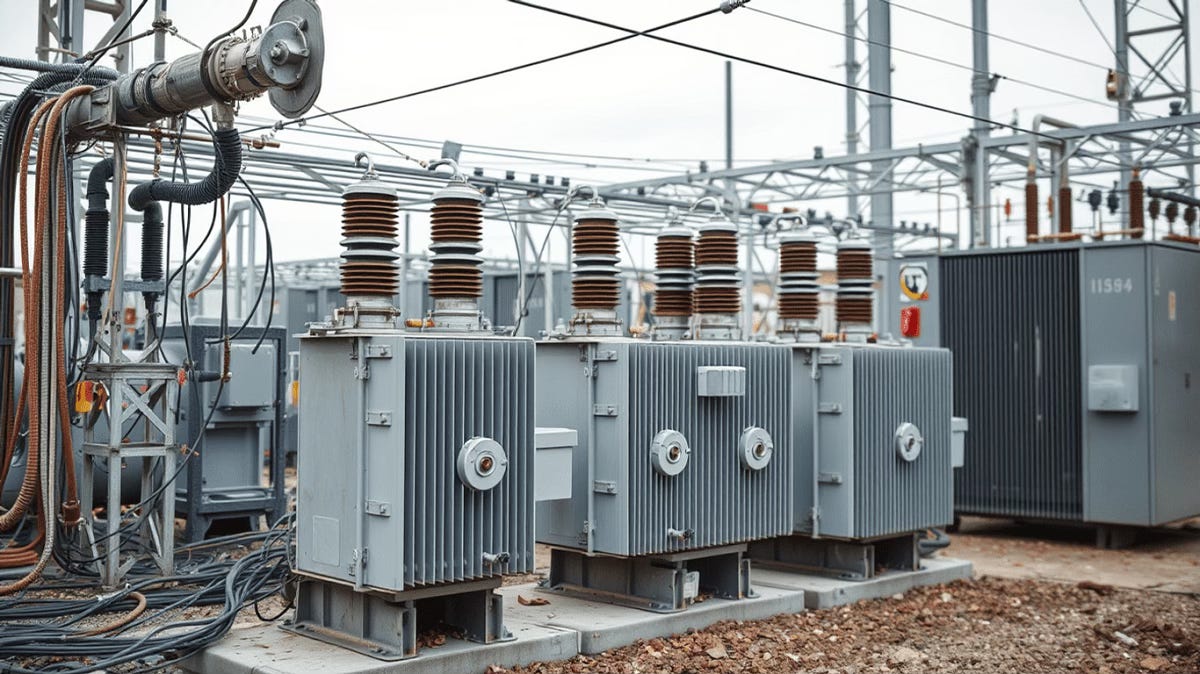The Future Runs Through Transformers
A historic supply shortage that may determine society's pace of progress over the next decade.
Global electricity demand is at an all-time high, and there’s no looking back. The IEA’s latest report predicts that electricity demand will outpace GDP growth globally for the first time since 1992 (barring recessionary anomalies):
We have not witnessed annual electricity demand grow by 4% for sustained periods in nearly two decades. Here’s something else from the IEA to help you understand our insatiable appetite for electricity:
Over the next three years, global electricity consumption is forecast to rise by an unprecedented 3,500 TWh. This corresponds to adding more than the equivalent of a Japan to the world’s electricity consumption each year.
This rise is largely attributed to increased industrial electrification, air conditioning, and data centre demand. However, regardless of the load type or generation source, one thing is clear across the electricity value chain: we need WAY more transformers.

Electrical transformers1 (not to be confused with their hotshot AI namesake) are physical devices that transfer electricity across circuits by altering input and output voltages. They are, arguably, among the most critical inventions in human history, enabling efficient long-distance electricity transmission. Transformers range vastly in shape and size, from small, substation units to this 38-metre-long behemoth. In this post, I focus on transformers used in power generation and distribution, as they represent the majority of the total market. Remember, however, that transformers are an absolute necessity at every step of power delivery, from generation to end-use.
The demand side
It is clear that we’re about to enter uncharted territory when it comes to electricity demand and infrastructure. Industry experts project market demand for transformers to grow at a compound annual growth rate (CAGR) of 5.9%2 (in USD) from 2025 to 2035. To state it mildly, we have never needed more transformers. Comparing 2020 and 2024 transformer lead time data for generation (large power transformers or LPTs) and distribution (pad-mounted) underscores the current supply-demand mismatch:
We have discussed the rise in electricity demand extensively in previous posts, but it is worth stressing just how much distributed energy generation will come online by 2030. Geographically, Asia dominates transformer demand (and supply):
And it isn’t just new electricity generation and distribution infrastructure driving the need for transformers. In the United States, studies suggest that more than 55% of existing distribution transformers (60-80 million) are over 33 years old3, approaching the end of their lives, and the situation isn’t much better in Europe. Furthermore, many previous-generation transformers don’t support modern sensors and communication equipment, making them nearly obsolete for bi-directional electricity transfer, predictive maintenance and other crucial functions.
This demand surge has directly translated into a huge, sustained price increase as utilities, hyperscalers, and distribution companies alike compete aggressively for access to these devices. Here’s why this matters: utilities and power producers didn’t fully absorb this price increase, instead passing a huge portion down to industrial, commercial, and residential customers by increasing electricity rates.
The supply side
Today’s transformer market is relatively fragmented, with a few international suppliers among a sea of local/regional players. Among the largest is Hitachi Energy, a Swiss-based power electronics manufacturer with multiple regional subsidiaries. Its fastest-growing subsidiary, Hitachi Energy India, shared this in its latest earnings report:
In the quarter ending June 30, 2025, orders totalled $1.3B, up 365.4 % year-on-year (YoY) […] In terms of segments, transmission continues to lead the order book, followed by orders from the rail & metro and data centre segments.
A ~4x annual increase in order book volume is astonishing. Similarly, GE Vernova India (another large transformer manufacturer) reported an 86% annual increase in its order book, driven by unprecedented demand for LPTs. While certainly good for business, anyone working in industrial operations will tell you just how complex executing this new volume will be.
Simply put, global transformer manufacturing capacity has not kept up with the relentless demand over the past decade. According to a recent study, manufacturing capacity has risen by only 5% since 2019, compared to a 23% increase in demand over the same period. Nassim Taleb had an interesting observation about commodity fluctuations a few years ago:
Markets do have an uncanny ability to over-correct across sectors (known as the “bullwhip effect”) Whether transformers follow this pattern remains to be seen. Having reviewed forward-looking statements by manufacturers, I find it likely that the current shortage will likely extend into 2026 and part of 2027. Transformer manufacturing plants are enormous, capital-intensive projects that require time, skilled labour, and vast amounts of raw materials to reliably produce transformers. The severity of the shortage will vary based on region, given the current trend of regional manufacturing holds.
However, the possibility of grabbing a slice of a market estimated to be worth between $124-170B by 2034 is naturally too tempting to sit out. Hitachi Energy pledged $1.5B to ramp up global transformer manufacturing capacity by 2027. GE Vernon, another industry leader, has committed to doubling production at its North Carolina plant by 2030. Also, with the upcoming tsunami of AI-related CapEx spend, big tech hyperscalers will almost certainly feature among the high-volume customers, given how critical stable energy supply is for data centres.
Keep an eye on this space. Between rising geopolitical tensions, commodity shortages, and a desire to reshore key sectors, I expect transformers to be among the more strategically contentious issues of this decade.
Understanding how transformers work is well worth your time.
According to a comprehensive 2025 assessment by Edvard Christoffersen at Rystad Energy









